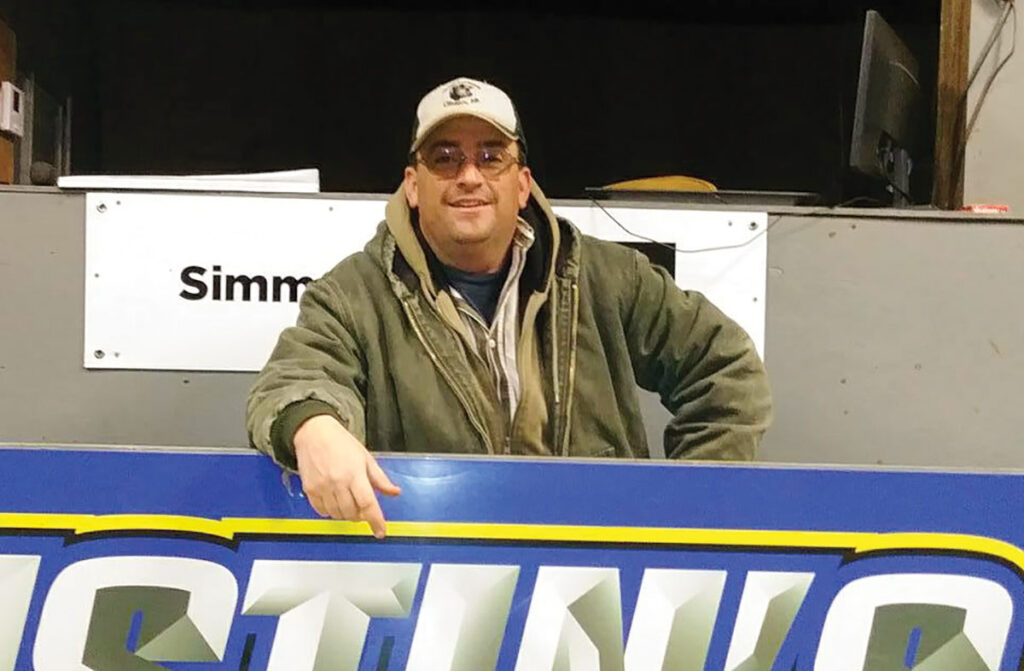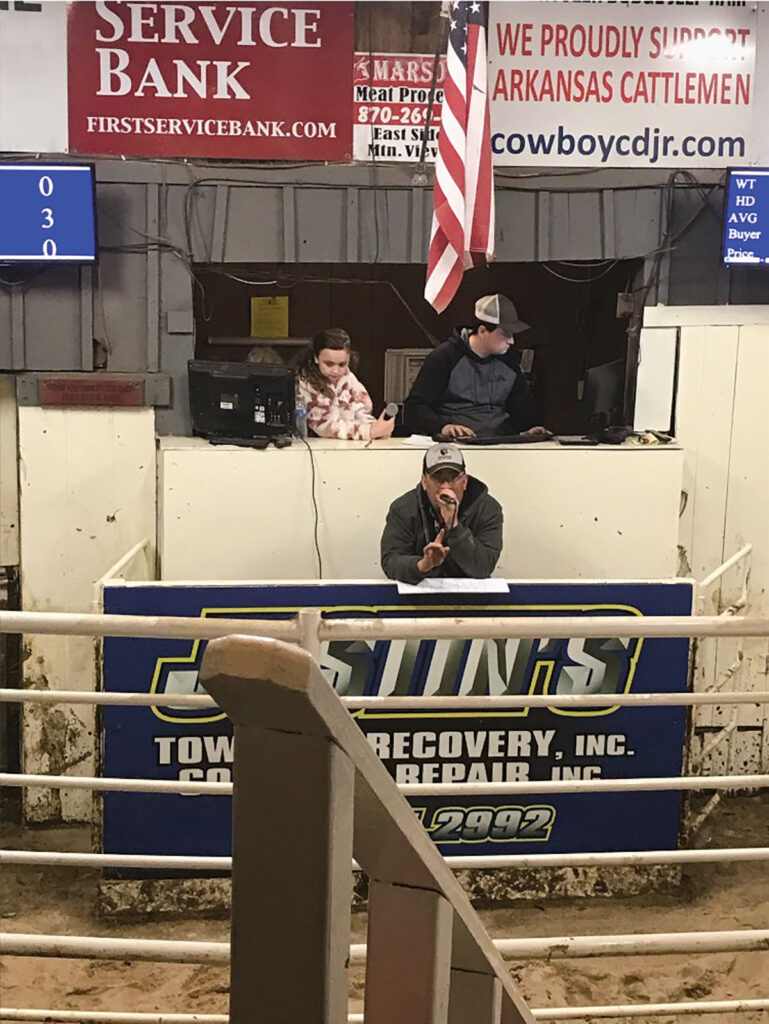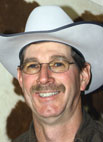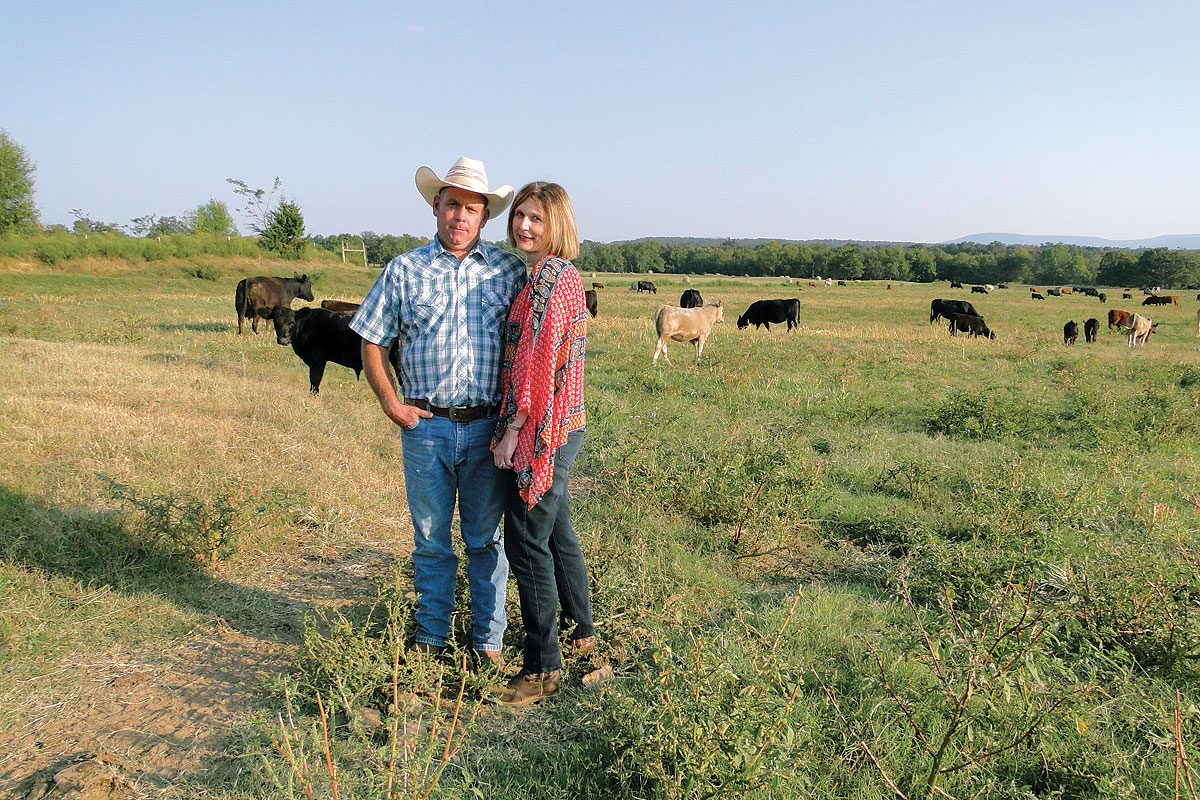
Josh Linville and his family purchased the Clinton Stockyards in 2015
CLINTON, ARK. – Some of Josh Linville’s earliest memories are riding in the back seat of his parents’ car and gazing out the window at a livestock auction as they drove thought Clinton, Ark. He hoped one day he would not only work there, own it. Young Josh’s hopes became a reality when he and his family purchased the Clinton Stockyards in 2015.
“This place is something I was thinking about when I was 8 years old,” Josh said. “I have always wanted this barn. Back when I was a kid, the sales at Conway and Marshall were big, and I got to thinking that when I got older that Marshall would be gone, and Conway would be gone. I would go by this sale barn and think this would be a good-sized sale barn on day. I don’t guess I’ve done anything that I’ve enjoyed more than working on this old barn.”
Josh said his family have been involved in the livestock market business for many years.
“I auctioneered for about 15 years at sale barns in Arkansas and southern Missouri. We got a chance to buy this barn and that’s what we did. We’re a true family operation with my wife Selena, brother Junior, my kids Ella and Alex, and dad Larry all working together.”
Clinton Stockyards was originally constructed in 1963 and operated under the Van Buren County Auction flag.
“It’s been here a lot of years,” Josh said. “It may have been shut down for a short time in the late 1970s, but other than that it has run every week since then.”
Cattle are the primary market for the Linvilles, with a few head of sheep and goats, and an occasional horse coming through the ring. Clinton Stockyards does not offer sales of poultry or swine.
“We start with sheep and goats, if we have them, and small calves and work our way up on sale days,” Josh explained. “If we do a cow sale, we do it with our regular sale. We hardly have any other special sales through the week because our sales are on Saturdays, so we do it all in one day.”

When Josh and his family initially took over Clinton Stockyards, sales were held on Thursdays, but the Linvilles decided to move the sale to Saturdays in hopes to draw more buyers and sellers.
“It really just didn’t fit the area,” Josh said of the Thursday sale. “Most people work a 9-to-5 job, and couldn’t take off Thursdays to bring their cattle. We moved it to Saturdays, and it has really helped our numbers.”
With the drier weather and some producers opting to sell early and cull heavily, receipts have been on the rise. Two recent sale days saw 1,000 and 1,400 head run through the ring.
“We usually run 400 to 600 a week,” Josh said.
The first year the Linvilles owned the barn, the sale averaged about 135 head per week.
“We have steadily climbed each year,” he said. “I think we’re going to be bigger this year.”
Customers will find a very friendly atmosphere at Clinton Stockyards, Josh said.
“Everyone gets along, and our buyers are competitors but they are all still friends,” he explained. “I’ve worked a lot of sale barns where buyers just glare at each other, won’t talk to each other. Here, everyone shakes hands, then it’s Katie bar the door when it starts, but when it’s over they are all friends again.”
Josh added that the competitiveness of the buyers helps sellers get the best price possible for their cattle.
Clinton Stockyards offers trucking, both to and from the sale, and has water and feed pens available to hold cattle prior to sale day.
Since taking over, Josh and his family have worked to update the facilities, with the priority being put on holding pens.
“I couldn’t weld a lick until I bought this barn, but today I’m a pretty nice welder; I’ve gotten pretty good at it. Things aren’t really where I want them yet, but we’re getting there,” he said. “It wasn’t very big when we bought it. In the last year I have just about tripled our capacity. When I got it, 300 or 400 head was about all it held. When we had that 1,400 head, we still had lots of room, but I didn’t have enough shaded pens. When it’s hot, we try to keep everything in the shade. There’s not much of the barn that has metal over it, but about 80 percent of our outside pens are covered with an 80 percent shade net and that has saved us this summer. We have sprinklers on top to keep those shade nets wet and it is unbelievable how it works.”
There may be larger barns across the region, but Josh said there’s something to be said about a barn that is close to home.
“Back years ago, those bigger sale barns could outsell someone like me, but they can’t any-more,” he said. “Back when Highway 65 was just a pig trail, a bigger barn on a major road would get the better deals. But now, we’ve got better roads and transportation, and I think that’s made a difference for these hometown sale barns. If you haul your cattle 200 miles, yes you might get more, but you’re going to have to get more because it’s going to cost you a fortune to get them there. I worked at sale barns in Missouri and everywhere else, and I hauled cattle all over the country for years, and I’ve decided you can take a little less in price because your cattle are standing for 12 or 15 hours waiting to sell.”







